All About Your Asian Ingredients (And What To Use Them For)
Following the success of my post on different cooking oils, how to choose between them and what different ones do, I’ve decided to focus on a few more ingredients that seem either overwhelming to choose between on packed supermarket shelves, or that you may not know too much about, buying them for a certain recipe before they move to languish at the back of your kitchen cupboards. Today, I want to run you through my collection of ingredients I use for Chinese, Japanese, Thai, Vietnamese and Korean cooking.
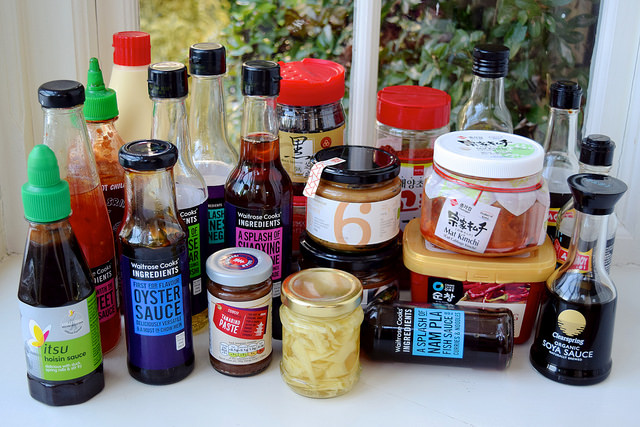
Yeah, I know it seems like a lot in this photo, and there are a few bottles of things I’ve currently run out of that are not included. Overwhelming, right? And with only a handful of exceptions, most of these ingredients come from the supermarket, rather than from specialist stores.
While we’re on the general topic, a few places to find some of the ingredients listed in various Asian cookbooks you might be attempting to cook from. These days, you can get most ingredients you need (of a good quality) from most supermarkets. I’ve put some notes on my favourite brands throughout this post. For some of the more out there ingredients, you may need to head to a specialist store. If you live in London, I could spend hours shopping for ingredients in Chinatown, and if you’re local to me, Thai’s ‘R’ Us and Starry Kent (which is particularly good for Korean food) in Canterbury have not let me down yet. However, if you are reading this and therefore have access to the internet, Amazon Grocery has basically solved all of your problems, because they pretty much have everything. Sous Chef is a good resource for ingredients and specialise equipment, too.
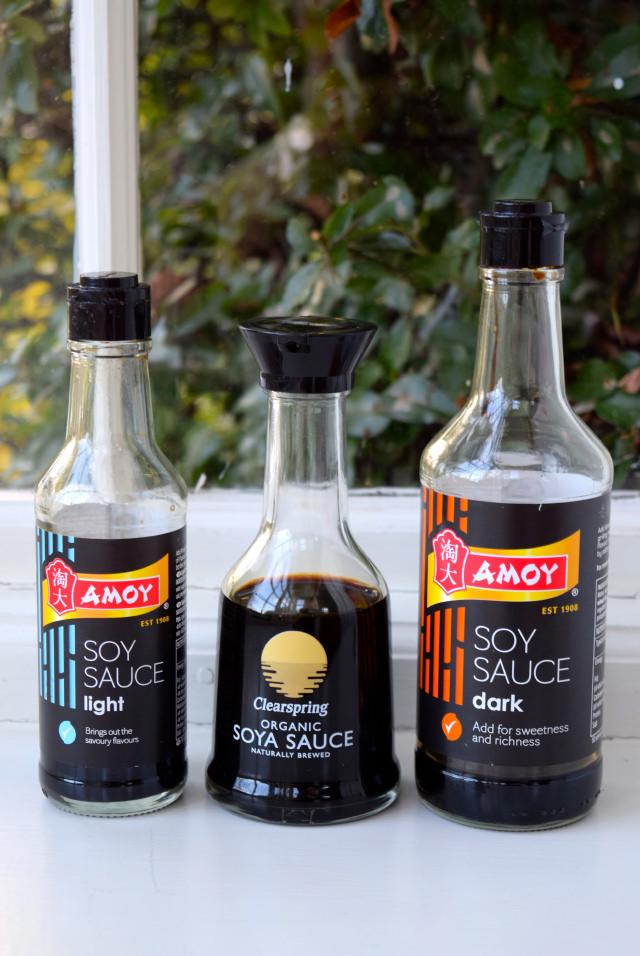
Let us start with the most basic Asian ingredient out there: soy sauce. You’ll notice I have three bottles, from left to right: light soy sauce, Japanese soy sauce and dark soy sauce. While personally the Asian cuisine I make the most for myself is Korean, as a family we usually cook Chinese the most, which is why our soy sauce is mostly Chinese, and Amoy is our favourite brand. I’ve tried supermarket brands with not much luck, but Kikkoman is also really good. I don’t always have a Japanese style soy sauce in the house, but Clearspring is my preferred brand, and I usually put it on rice or use it for dipping rather than in cooking because I like that it tastes like the soy sauce you get with your sushi! People who are gluten free use Japanese tamari (you can find more info here), which is a good substitute, but I personally don’t like the flavour.
It is important to know the difference between light and dark soy sauce. All soy sauce is made from fermented soy beans, and as a general rule light soy sauce is what you should look at as standard soy sauce used in most sauces and marinades (it is basically the Asian equivalent of salt), and dark soy sauce obviously looks darker so is used when you want to add more colour to a dish, contains has a less salty flavour than light soy sauce, and is slightly sweeter too. Traditionally dark soy is what is used when a recipe calls for large amounts of soy sauce, and personally I prefer it and use it as my default in most recipes. For reference, Koreans use two different soy sauces too, a regular one that is like Japanese soy sauce, and a very salty one called gook gan jang, which is very strong. I just stick to my Chinese light in Korean recipes, though.
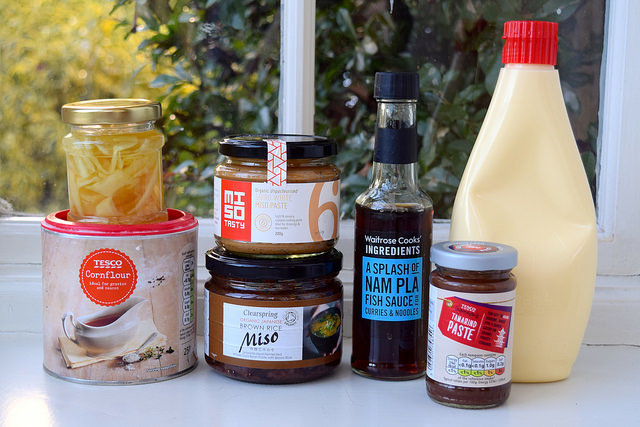
A few miscellaneous ingredients here before I move onto some more categories. While it’s not from the Asian aisle, cornflour is the thickener of choice in lots of Chinese stir fries (mix a little with water to make a paste, then stir that in), and in Korean cooking it can often be used as a substitute for rice flour if you’re not quite ready to invest.
In the Japanese aisle, I adore miso, both to make soups (just add hot water, and a splash of soy to taste), and to add a real hit of unami to anything from butter to coat a corn on the cob, to the filling of my devilled eggs. Clearspring is my preferred brand, but their white miso comes in a difficult pouch rather than a jar, so I’ve been giving Miso Tasty (you can find it in Waitrose) a try, which is of really good quality, but much saltier than the Clearspring one (so watch out when following a recipe to the letter!) For condiments, I love to keep a jar of pickled sushi ginger to eat with any vaguely Japanese themed dish (I make my own, and you can find my recipe here), and the super squishy bottle just adds to Japanese Kewpie Mayo being one of my favourite items in my fridge right now. It’s that slightly sweet mayo you get with sushi, and I’m more than slightly addicted; I have it over rice bowls, with Asian fritters and even with regular fishcakes. It’s an acquired taste apparently (my family don’t like it, but my friends love it), so try to get a smaller bottle to try first if you can – I’ve seen them in Asian supermarkets. You can pick up this full sized bottle in Marks & Spencers Food Hall, but you can also order from Amazon.
Finally, Thai/ Vietnamese ingredients. Yes there is a difference between Thai and Vietnamese fish sauce (I use it in Korean stews, Pad Thai, Thai and Vietnamese salads, and in dipping sauces), but unless you’re purest, I interchange them all the time depending on what I’ve grabbed whenever I’m running low. For reference, Vietnamese fish sauce is usually milder in flavour, and the bottle you’ve picked up in the supermarket is probably Thai. I don’t use tamarind paste a lot, but I have it in the fridge from when I was testing a Pad Thai recipe as it is what gives it most of its flavour aside from fish sauce. Some earlier Pad Thai recipes for the British market when it was harder to get a hold of sub it out for lime juice, but using tamarind is better. I don’t have a preferred brand, but I can tell you this Tesco one is awful and I won’t be buying it again!
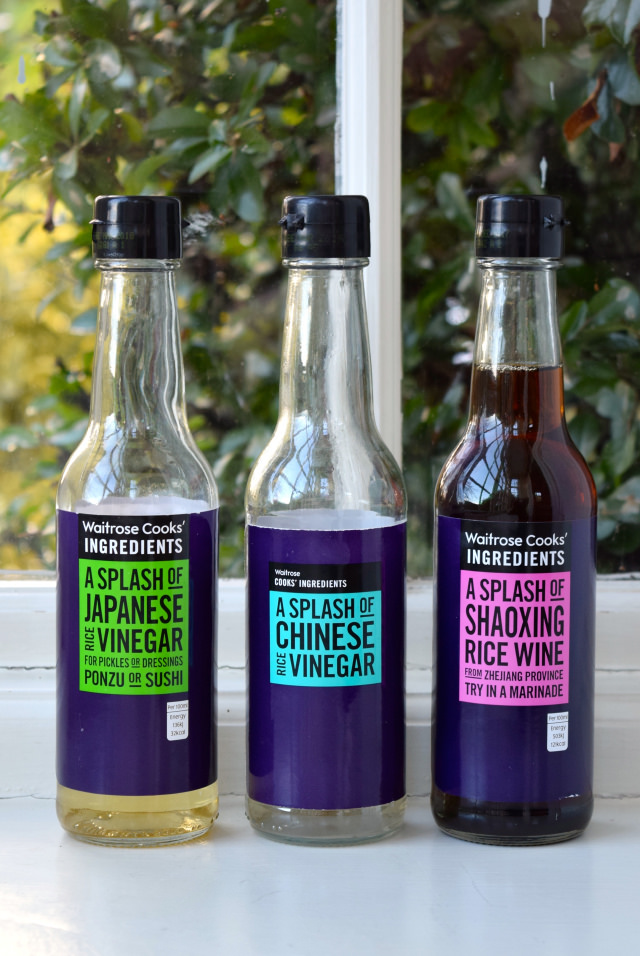
Now, lets talk about rice products: vinegars and wines. Sake and Mirin are missing from this shot; sake because I forgot to fetch it from the liquor cabinet, and mirin because I’ve run out. You’ll see here that most of my Asian ingredients are from Waitrose’s ‘Cooks Ingredients’ range, which I love because while some of them are not quite authentic, they do the job, taste great, are always of a great quality, and are convenient for me to pick up.
Starting with the vinegars, sticking to the basics there is Chinese and Japanese. They are different, but you can get away with interchanging them. I prefer Japanese which is slightly sweeter and less like Western white vinegar because it makes a better sushi ginger, which is my main use for it. Really, the only way to know the difference is to try both and see which you prefer, or to go for the variety that most suits your preferred cuisine. For reference, in Chinese cooking, you can also get black rice vinegar, which while it is an ingredient on its own, has more in common with balsamic in the West.
Moving onto rice wines, mirin and sake are Japanese, and shaoxing is Chinese. Mirin is light and sweet, used in dressings and marinates, and sake is more like a spirit, enjoyed in meals but also used in marinades where you’re looking to tenderise the meat. Shaoxing has a fuller flavour, is a little sweet, and is what adds the perfume and depth to a lot of Chinese marinades and stir fries. I would not recommend interchanging these.
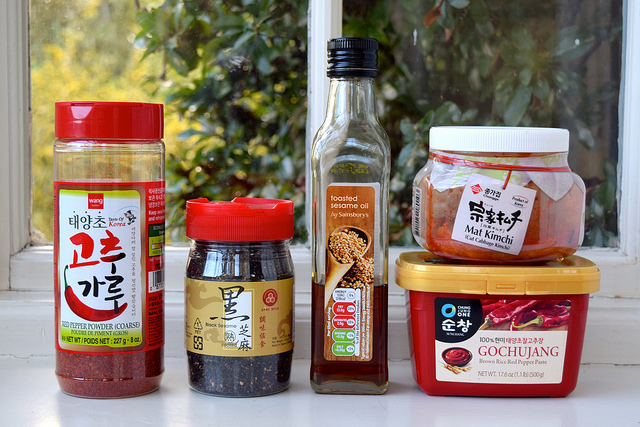
Next onto my essentials for Korean cooking, because let us be honest left to make something quick and satisfying just for me on a weeknight, I’m always going to whip up a batch of Kimchee Fried Rice, before smothering it in Kewpie and Sriracha. I buy my kimchee in the chiller cabinet of the Asian supermarket (it is the one thing I make the trip especially for as both of the places that sell it in Canterbury are a bit out of my way, and I just pick up anything else I’m running low on while I’m there), and I favour Mat Kimchi, which is cut cabbage kimchee. You can see my preferred brand in the picture.
Gochujang is a brown rice red pepper chilli paste which is pretty much ubiquitous to Korean cooking. I find it has more depth of flavour than some other chilli pastes, and while this tub is from the Asian supermarket, supermarkets are starting to bring out their own versions (I’ve spied one in Waitrose I have not tried yet), and you can buy Yogiyo! brand in Sainsbury’s, which while it is a bit looser than the imported version, I do rather love. A good introduction to the flavour is if you make the gochujang roasted pork belly slices to go with my Korean Pork Belly Bun Bowls. On the topic of chilli, gochugaru, otherwise known as Korean red pepper powder are fine chilli flakes, that look a bit like Aleppo (Turkish) chilli flakes. There is nothing else like it, but it has an average amount of heat, and a slight paprika like smokiness to it. It’s in gochujang, and it is what makes kimchee red, but as it comes in big containers I’d only recommend buying it if you do a fair bit of Korean cooking, as it does not really exist outside in other Asian cuisines. If you’re looking to get into Korean food at home, Sous Chef have a great starter kit including my Korean bible, Our Korean Kitchen, a jar of kimchee, gochujang, red pepper powder, sesame oil, and a few other goodies.
Finally, you can’t make Korean food without a whole load of toasted sesame. You tend to get a better toasted sesame oil from the Asian supermarket, but that is weight for me to carry (which is also the reason I still use Jasmine rice in my Korean cooking, rather than Korean short grain rice even though I know perfectly well where I can buy it!) and I find supermarket brands also do perfectly fine; I tend to pick it up in Waitrose or Sainsbury’s. While it won’t be the end of the world if you leave them out, toasted sesame seeds are a typical final flavouring/ sprinkle in lots of Asian cooking. Pro tip: did you know you can buy them already toasted in Asian stores (and on Amazon!), which is great because they burn so easily? And if you have any nearing their use by date (they’re horrid stale) that you need to use up, you can always make my Sesame Prawn Toasts.
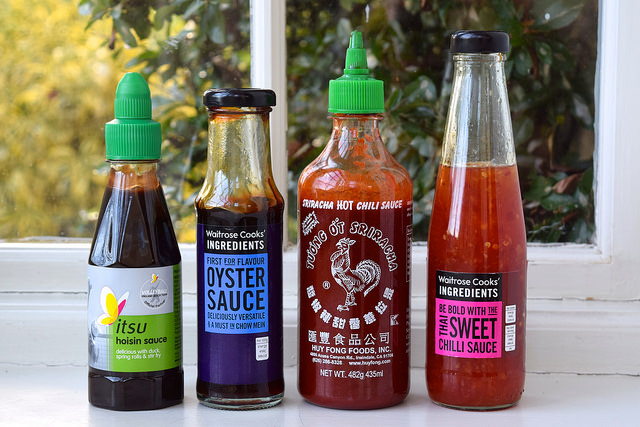
To finish off this post (thank you if you’re still reading and you have not lost interest by now!), a few miscellaneous sauces. We’re hoisin snobs in this house, and for me it has to be itsu’s version every time, which you can find in Waitrose, Sainsbury’s, or on Amazon. We’re also fussy about our oyster sauce (which is all you really need, along with soy to make any stir fry with veggies, noodles and proteins on the fly), and go for Amoy or Waitrose Cooks’ for our preferred flavour.
Moving off of the Chinese and on to the Thai, I’m not to bothered about my sweet chilli sauce, so I just grab whatever is available. However, even though it is Vietnamese style, I’m about 60% a country bumpkin, 30% Londoner, and 10% Angeleno. That Californian 10% of me means I have to buy Huy Fong Foods’ Sriracha that hails from 1980’s Chinatown in Los Angeles, because it is essentially the best. I then put it on everything from Asian pancakes to fried rice to burgers to fries. Yes, I’m one of those sriracha people. You can get it in Sainsbury’s, and on Amazon by the way, and failing that, Tesco’s own brand is actually pretty decent.

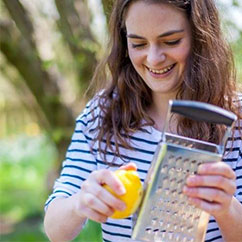
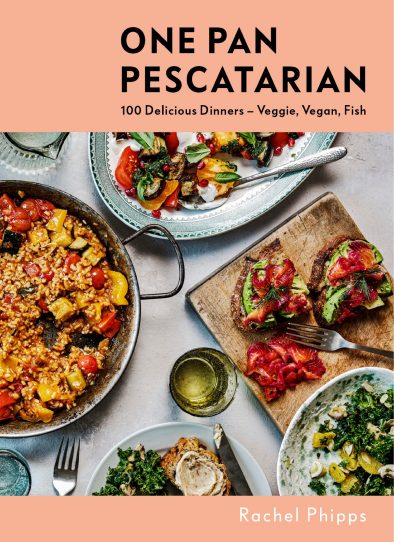
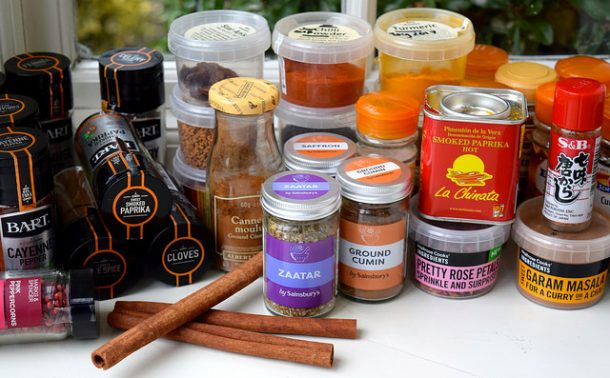
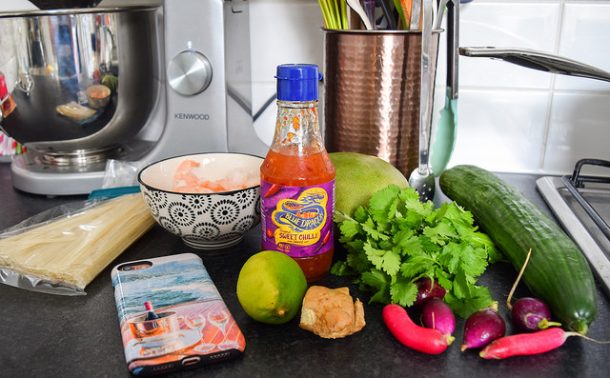

Discussion